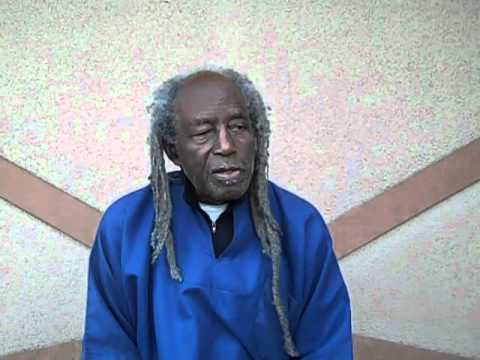This two-face tale
Dear Editor,
When I changed my name in 1968 to my present name, it was an act that hundreds of Guyanese had done as part of the Cultural Revolution (see ASCRIA’s booklet ‘Teachings of the Cultural Revolution’), launched by ASCRIA in 1968.
I announced my name change to the newspapers so it was nothing secret.
This was a simple way for us, devoid of our ancestral languages, to make a public and formal affirmation of our direct links with the African continent.
As one of those making this affirmation, I happened to be a person who had been taking an active part in Guyana’s national affairs.
From the very start, there was concern that my change of name was a way of evading responsibility for whatever offence I had given to others in the political arena. At present, as Dr. Vishnu Bisram’s letter witnesses, there is a search for information that will help to classify my many blunders and insensitivities, and few works that may be considered useful, according to the name I bore at the time they took place.
This search will lead the seekers up a blind alley. My actions in public life, as in private, were undertaken not according to name, but as a human being, with all the strengths and weaknesses that we contain.
Dr. Bisram, pursuing someone’s theory of quality of activity according to name, as described in his letter, is yet another version of a fiction that had a life of its own during the disturbances of the 1960s. In it, he catches Sydney King red-handed, ordering a gang, armed perhaps with axes and power saws, to destroy fruit trees growing along both sides of the public road, between Beterverwagting (BV) and Buxton.
A few sugar estate housing schemes lay on either side of the public road. The sugar industry Labour Welfare Fund leases for each householder prevented the planting of permanent crops like coconut and mango on these plots.
Let me try to illustrate the execution of this offence against innocent living things: Picture me, a person of slight build, supervising a band of destroyers, to move from lot to lot, homestead to homestead, chopping down fruit trees, as though they were busy-busy bush, timing the traffic and then crossing to the opposite side of the public road to repeat the offence.
Is it morning, midday or night? The researcher does not say. However, the householders make no attempt to stop the destruction of their trees. Fearful that if they protest, or get in the way, or let loose their dogs, or raise uproar, Sydney King or his gangs would turn on them and treat them like human busy-busy.
Dr. Bisram and his informers do not help us by explaining under what authority I was acting to be ordering the cutting down of trees while not authorized to do so under the law, or by the PPP cabinet that held power up to December 1964.
I almost forgot that throughout 1964, there were two garrisons of British troops in Buxton after the killing of the Sealeys and the burning of eight or nine buildings, owned by Indians, on the night of the Sealeys’ funeral. I forgot, too, that there was a special British military security officer, monitoring the movements of a number of political people and paying me random visits connected with his duties. At the time, I was a member of no political party.
While I was at home in Guyana, I often found myself defending Dr. Bisram’s election forecasts, while others dismissed them. To me, it cannot be the same Dr. Bisram, the pollster, who can swallow and repeat the story of the murdered trees, included in his letter.
Perhaps, Dr. Bisram is a good listener and is ready to repeat what people tell him, so as to empower his informers. Dr. Bisram once wrote in a daily newspaper in Guyana that he had been told that at a public rally in Guyana that I, Eusi Kwayana, had stood by while a thug kicked Dr. Cheddi Jagan, who was at the time lying on the ground.
I was speechless at reading the report. All I could say was that it was very strange, because Dr. Jagan had a bodyguard, Mr. Harold Snagg, armed and trained by the Guyana Police Force, who was always present with him at public rallies. I respect Dr. Bisram’s habit of listening to people with something to say. Not many busy people listen to anyone, but as the old people used to say, we have to be able to sift sense from nonsense.
The disturbances of the 1960s lasted until the second half of 1964. They gave birth to fictions and demons. The story of the murder of the trees had an original form on the East Coast of Demerara that I remember well from experience. A visitor to an Indian village would be told that there were people who wanted all buildings burned down.
Indians were told that Sydney King said that when he stood at the end of Buxton, he wanted to see right through to Georgetown. In African villages, I myself have had to argue against people who told me that Janet Jagan had said that when she stood in Georgetown and looked to the east, she wanted to see straight through to Buxton, with no building left standing.
This two-faced tale was the original form of Dr. Vishnu Bisram’s version, with me as the culprit of something that never took place.
The only case I remember of trees in the way being trimmed, not cut down, was when the Demerara Electricity Corporation extended electricity from Plaisance to villages up to Buxton-Friendship or Vigilance.
My school mates at St. Anthony’s RC primary school, if they were to read Dr. Bisram’s letter, would simply brush it aside with the remark, “Jimmy Cock mek (make) Ram Goat”.
A way of saying that something is impossible.
Eusi Kwayana






















